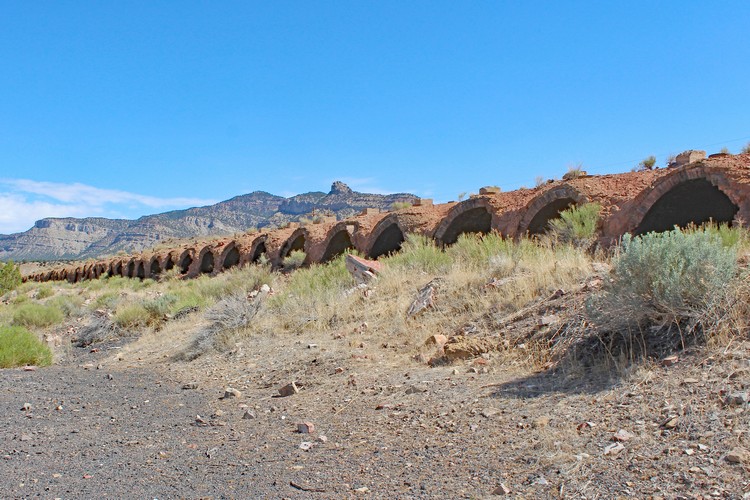 |
The Coke Ovens of East Carbon(Sunnyside) Utah
 |
While on a road trip across Utah, we just happened to spend a night in the town of Price in the northern part of the state. A photograph, in a visitors guide, showed a long line of old coke ovens that were nearby. Coke ovens were used to convert coal into coke, a very hot burning fuel that was used in the furnaces of almost all of the early metal smelters. Ovens like these are not common in Arizona, so we neeeded to go and check them out.
The kilns in the visitors guide were located in East Carbon City approximately 25 miles east of Price. This topographic map shows the layout of the area. East Carbon City was the name taken on after the consolidation of two older communities--Dragerton and Sunnyside. The ovens depicted in the brochure were the ones south of the town near Highway 124. At the time of our visit, we were not aware that there may have been an older set closer to Sunnyside.
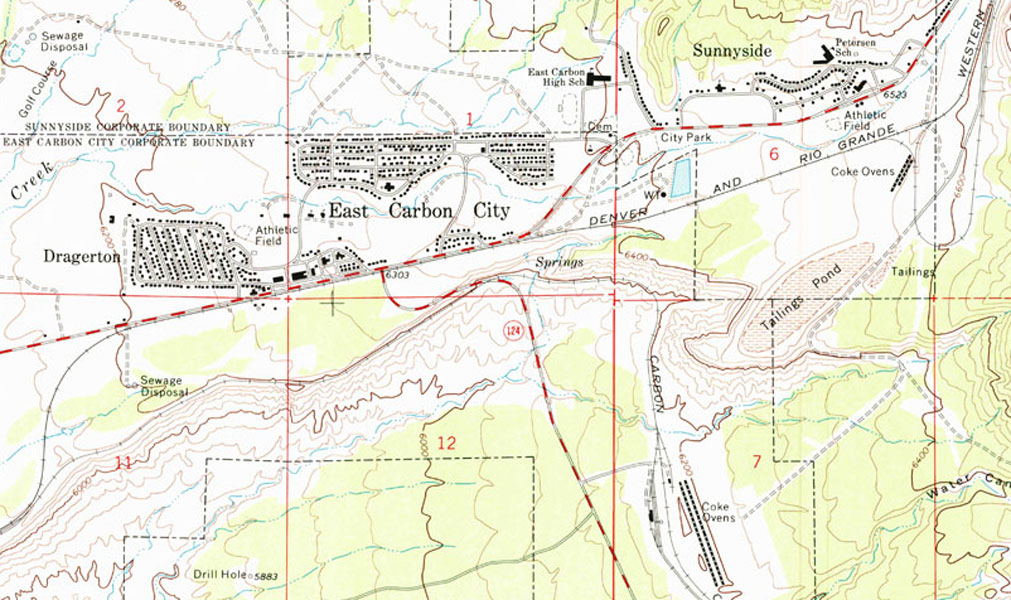 |
In the 1940s, the Kaiser Steel Corporation took over the operation of the Columbia Mine. It is unclear whether the coke ovens were constructed by Kaiser or were pre-existing. The coke that was produced here was shipped to a Kaiser steel mill in California. In 1958, the coke ovens were shut down and in 1967 the mine ended its operations. One version of the mine's history can be found here.
This Google Earth View shows the location of the surviving coke ovens and the nearby railroad yard. The rows of coke ovens, which extend for more than 1/4 mile, were once even longer and it appears that there may have been other rows. It took a pretty serious railroad operation to handle all of the coal and coke that was produced from here.
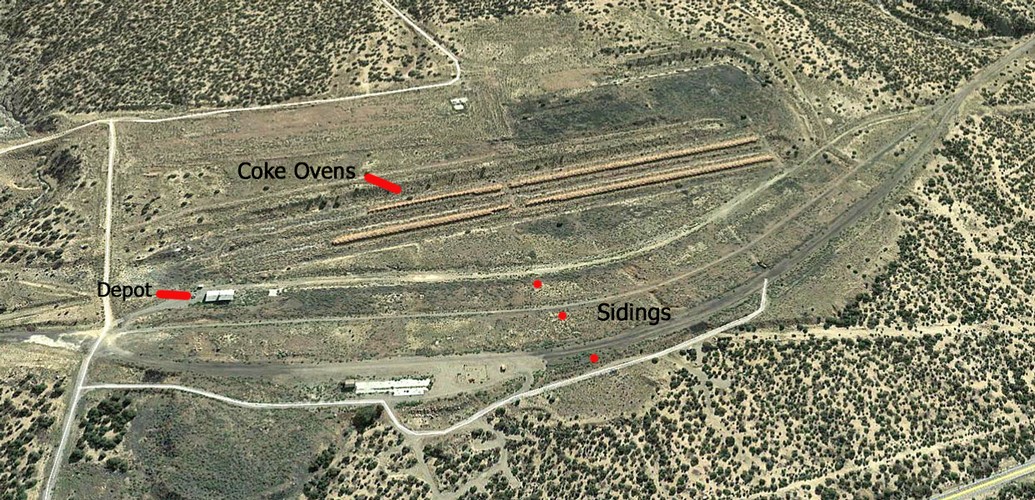 |
The rows were double sided with the ovens constructed back to back. Their front walls are no longer in place. One explanation for that is that when the ovens were no longer needed, the company had to render the structures unuseable in order to remove them from the tax rolls.
This image is from a time when the ovens were in operation. The fronts appear to have been constructed of quarried stone. Railroad cars were parked between the rows and were filled from wheelbarrows that were rolled up wooden planks propped against the sides of the cars.
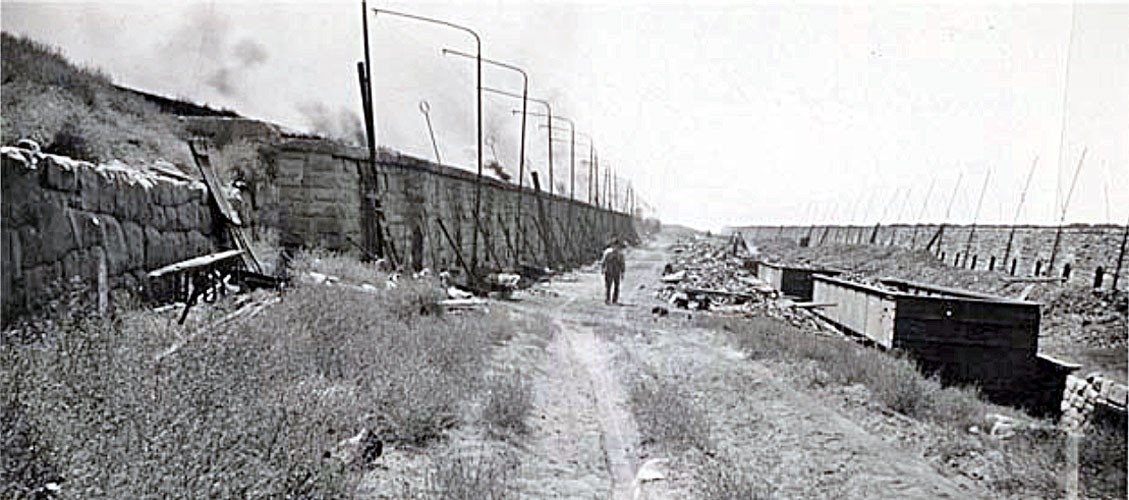 |
The Columbia coke ovens had the traditional beehive shape and were constructed of brick. Each was approximately 15' across. A Youtube video shows the recent construction a a coke oven in Pennsylvania that was accomplished by using original materials and methods. The many different types and shapes of bricks that were necessary to complete the dome shape are shown. Co-incidentally, the Yough bricks described in the video were used in these ovens in Utah. The video is here.
The domes were not left exposed, but were covered with dirt to help contain the heat. Coal was loaded through the top openings and the ovens were filled to a depth of two to three feet. Residual heat from the previous firing was often times enough to ignite the new charge. Air flow was controlled by how much of the side door openings were left open. The conversion of the coal to coke could take up to 72 hours to finish. Volatile impurities and moisture were carried off into the atmosphere through the top openings. Other waste materials remained as a slag. When the conversion was complete, the pile was quenched with water. While the mines were operated only 6 days per week, the coking operations were conducted 24/7.
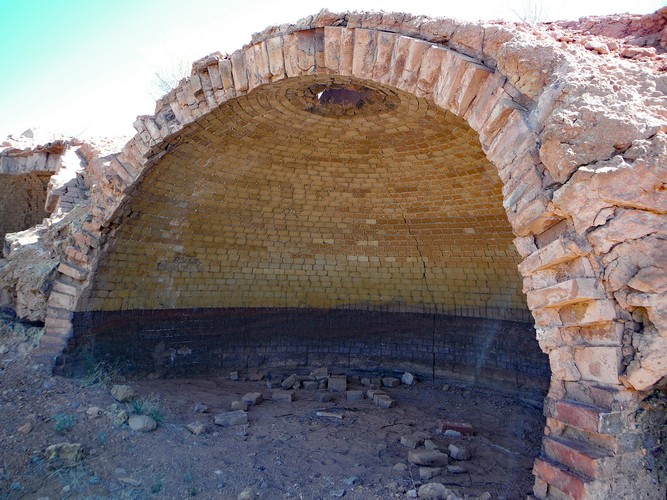 |
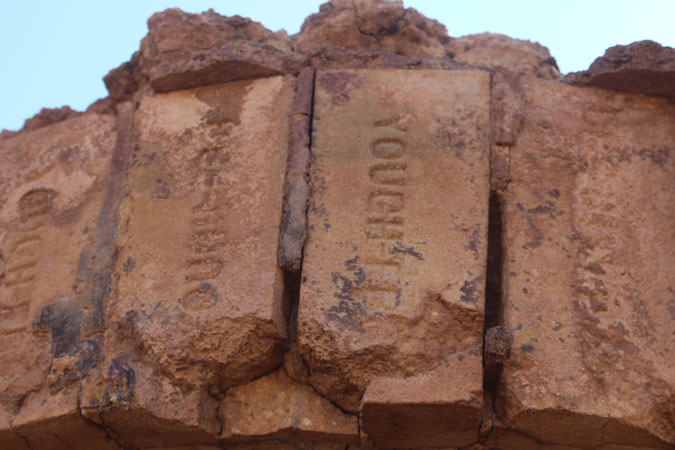 |
The loading of the coke ovens did become more mechanized with time. A rail line once ran across the tops of these ovens. Specialized "larry cars" had chutes which directed the coal down through the openings. One section of this Youtube video shows the larry cars in action.
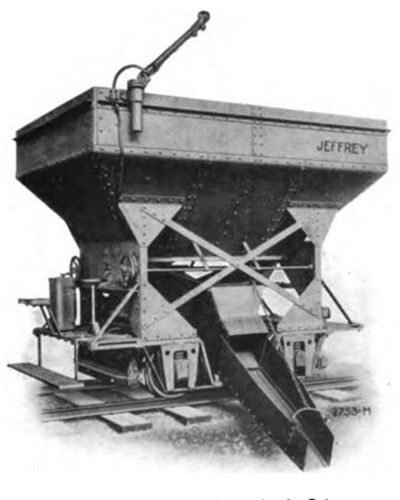 |
In the 1920s, the Carbon County Railway Company was formed to facilitate rail traffic from the Columbia Coal Mine. This was the depot. Until the 1940s, when the coke ovens were constructed, railroad cars filled with raw coal were shipped from this location.
In the 1940s, the Horse Canyon Mine was opened approximately 6 miles south of the Columbia Mine. Tracks were extended from the yard at Columbia to the new operation. That mine was in production until the 1980s.
At the Horse Canyon mine site, all structures have been removed except for the mine's offices, warehouse, locomotive/car shop, and a dining hall. Pretty much everything else once associated with the mine has been removed. A photo gallery of what once existed can be seen here. It would have been really interesting to have seen the car loader that appears in the photos. On up the canyon a short distance are two concrete structures that may have been powder magazines for the mine.
There is a perimeter fence around the buildings, but empty spaces where there were once gates. The property is not posted against entry.
The Locomotive and car shop
The warehouse.
This building may have been used as a dining hall and change rooms for the miners.
As with our earlier stop at Navajo Lake in the southern part of the state where we ended up staying 5 days, out stop in Price Utah was extended from an overnighter to another 5 day period. There were al lot of interesting places to check out in the area, in addition to the coke ovens.